All Aboard the Ella Weekend Express: Sri Lanka’s New Luxury Rail Experience
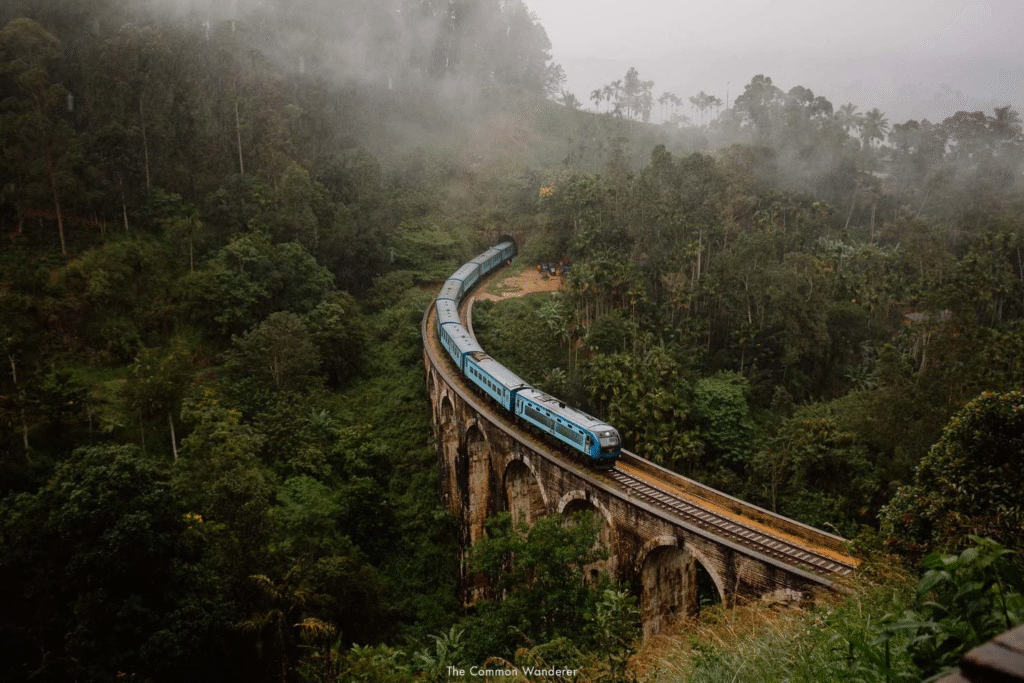
Launching August 16, 2025, the Sri Lanka Department of Railways will introduce the Ella Weekend Express – a premium train service running Colombo Fort ↔ Badulla on weekends. It’s designed to meet rising demand from local and international tourists seeking comfort and stunning views en route to Sri Lanka’s hill country Schedule at a Glance Segment Departure Arrival Capacity Colombo → Badulla Saturdays 05:30 AM Afternoon 350 seats Badulla → Colombo Sundays 09:00 PM Late night 350 seats This carefully timed weekend rotation provides a full-day outbound journey and a relaxed return—perfect for a getaway Scenic Highlights Along the Hill Country Route Traveling along Sri Lanka’s iconic Main Line (290 km from Colombo Fort to Badulla), passengers will be treated to enchanting sights: tea terraces, plunging waterfalls, misty valleys, and colonial-era towns, particularly between Nanu Oya and Ella—widely regarded as the most breathtaking stretch of railway in Asia. Passengers can expect views of: Unlike traditional trains, this luxury service will pause briefly at prime photography points to let travelers capture the moment. What Sets the Ella Weekend Express Apart Compared to the Ella Odyssey tourist train (running Thurs/Sat outbound, Fri/Sun return) and the daily Udarata Menike/Podi Menike services, the Ella Weekend Express provides a more exclusive, premium, and practical weekend option for leisure travelers Practical Tips for Travelers Why the Hill Country Has Global Appeal Sri Lanka’s Main Line railway—stretching from the coastal capital into the misty highlands—is globally revered for its nostalgic charm and visual drama. Although the full Colombo–Badulla journey takes 10–12 hours, the golden stretch from Nanu Oya to Ella delivers unforgettable views faster and better lit, particularly when riding eastbound in the morning sun. Friday evening: Travel to Colombo Fort or stay in the city. Saturday 05:30 AM: Depart Colombo Fort on Ella Weekend Express → arrive Badulla mid‑afternoon. Saturday/Sunday: Explore Ella, Nuwara Eliya, or tea‑estate retreats; join walks on the Pekoe Trail through lush tea fields. Sunday 21:00 PM: Board return train to Colombo, arriving late for smooth next-day transitions. Book Your Seat here – click here https://seatreservation.railway.gov.lk/mtktwebslr
Sri Lanka Crowned the Most Beautiful Island in the World for 2025

Sri Lanka has officially been crowned the Most Beautiful Island in the World by global travel platform Big 7 Travel, placing first in its “50 Best Islands in the World” list for 2025. This recognition comes shortly after another prestigious accolade—EnjoyTravel, via News First, named Sri Lanka the Best Island in the World in its own global ranking. What Earned Sri Lanka the No. 1 Spot Top 10 Islands in the 2025 Big 7 Travel list: Why the Awards Matter These recognitions arrive at a pivotal time for Sri Lanka’s tourism sector, which has been growing steadily. The country recorded over $1.5 billion in tourism revenue in the first half of 2024 alone, with a 62% rise in international visitor arrivals. This renewed global attention shines a light on Sri Lanka’s true potential—a destination that offers a complete travel experience: ancient culture, natural beauty, adventure, and hospitality. What Makes Sri Lanka So Special Tourism on the Rise Sri Lanka’s inclusion at the top of multiple global travel lists signals strong confidence in its tourism comeback. The government and private sector continue to invest in infrastructure, digital marketing, and eco-friendly initiatives to ensure sustainable tourism growth. More travelers around the world are now looking to Sri Lanka not just as a beautiful island, but as an immersive experience of culture, nature, and unforgettable moments.
Top 5 Things You Must NOT do in Sri Lanka

The South Asian Island travelling destination Sri Lanka offers unforgettable memories throughout your journey. From sandy beaches to a vast variety of wildlife experiences, the country has so much to offer. As a multi-cultural nation, the country will offer you unique experiences. However, not only for Sri Lanka any country what place you travel you must know what to do and what not to do in a country. Here are the five most common things you must not do in the country. 1. Do not eat with your left hand Sri Lankans use their right hand to eat. Eating with the left hand is not ok for many, and if you are uncomfortable with eating with your hand, it’s better to use cutlery. 2. Do not turn your back to the Lord Buddha statues. The majority of Sri Lankans are Buddhists, and all the Buddhist temples and Buddha statues are highly respected. However, turning back and taking pictures is highly unacceptable. Also, you will see signs showing not to turn back to the statues in many places. But it’s good not to turn your back to the statues even if it’s not recommended for you. 3. Do not bathe in unknown places As an Asian country, Sri Lanka is filled with many beautiful lakes’ rivers and waterfalls. If you really wish to enjoy the bathe, always try places where locals are using. Not only for those this applies to the beaches too. Check the warning signs around and try the places that locals are using. 4. Do not wear too much revealing clothes to religious places. It’s a tradition in the country to wear decent fewer revealing clothes to the religious places. So check the styles the locals wear, and you can match with them. 5. Showing too much affection in public places is not common Sri Lankans are not usually used to show affection in public. So hugging kissing or many other affectionate activities in public places are not common. Stay with us to know more
Where to Eat in Kandy During the Esala Perahera: Top Spots for Foodies

Kandy’s Esala Perahera is one of Sri Lanka’s most spectacular annual events. Every year in July/August, the sacred city of Kandy comes alive with a 10-day cultural festival honoring Buddha’s Sacred Tooth Relic Nightly processions wind through town with traditional dancers, drummers, fire-breathers and brightly-lit elephants This “Festival of the Tooth” is often cited as one of the world’s oldest cultural celebrations, drawing crowds from across Sri Lanka and beyond. The good news: Kandy has a thriving food scene to keep your energy up. From spicy Sri Lankan curries to wood-fired pizzas and trendy cafés, there’s something for every taste. Local cuisine is a flavorful fusion of spices – think aromatic rice-and-curry, fresh seafood and tropical fruits – influenced by centuries of cultural blend. During Esala Perahera, popular eateries fill up fast, so many festival-goers recommend arriving early or even booking ahead. Whether you’re a tourist or a local, you’ll definitely want to know the best spots to eat. Top Restaurants in Kandy for the Perahera Organica Lounge – A hip café specializing in healthy bowls, salads and fresh juices. Just 650 m from the Tooth Temple, it’s a great spot for breakfast or lunch between Perahera events. Organica has a relaxed vibe and offers vegetarian and vegan options, and reviewers rate it about 4.8/5. Devon Captain’s Table – A historic tea house dating back to colonial times. Located on the main parade route (just 450 m from the temple), Devon serves Sri Lankan hoppers, snacks and British-style tea. It has antique décor and old-world charm – a cool place to step back in time. (Pulse notes a rating of about 4.0/5.) Mandiya – A local treasure for Sri Lankan sweets and snacks. Mandiya (meaning “Monkey” in Sinhalese) on Senanayake Veediya is famous for crispy kithul jaggery pancakes and sweets. It’s right by the Temple grounds (Pushpadana Complex) and is strictly take-away. According to Pulse, it’s rated ~4.4/5, and it’s loved for affordable traditional desserts that recharge you between performances. Java Lounge – A popular coffeehouse chain in Kandy. Java Lounge is just 80 m from the temple (almost across the street), offering coffee, smoothies and sandwiches around the clock. It’s a reliable modern café if you need a quick caffeine fix; visitors give it about 4.6/5. Cafe 1886 – Tucked inside the private Hill Club, this elegant café is set in colonial-era splendor. Cafe 1886 makes gourmet coffee, cakes and European-style sandwiches. It’s about 1.1 km from the Temple. While pricier, it’s beloved for its tasty desserts and grand interior (reviews ~4.3/5). A perfect place to unwind after a night of drumming and dancing. Aroma Cafe – A cozy 24/7 diner on Colombo Street, just 2 minutes’ walk from the Tooth Relic. It’s great for Sri Lankan curries, omelettes or pastries at any hour. Pulse gave it around 4.3/5 for its hearty menu and friendly service. Locals often stop here for an affordable meal or late-night coffee. These suggestions cover a range of tastes: from Western-style pizzas and coffees to authentic Sri Lankan fare. The downtown area around Kandy Lake and the Temple is packed with eateries of all kinds. For example, Cafe Nuwara, Buono, Blizz Cafe, and Premium Outlet are other local favorites. So whether you’re a traveler or a local, you’ll find plenty of tasty options. Tip: during Perahera evenings, many restaurants have wait lists, so try to dine early or enjoy a late dinner after the crowds thin. ## Where to Stay and Other Tips With so much action in Kandy, you’ll want a comfortable base nearby. Many visitors stay within walking distance of the Temple of the Tooth. For instance, the historic Queen’s Hotel, Kandy – Sri Lanka’s oldest grand hotel – is just 450 m from the Tooth Relic shrine and often offers colonial-style rooms. Other popular options include Lake Avenue Kandy and Heritage Boutique, both under 600 m from the festival route. Budget travelers can also consider Oak Ray City Kandy (a no-frills hotel) for a lower price point. If you plan to buy reserved seats for the Perahera, book early. Official ticket vendors (e.g. Royce Tours & Travels at Queen’s Hotel) open sales months in advance. For example, the first Kumbal Perahera seat at Queen’s Hotel (July 30, 2025) was listed for about $80 (see official Kandy Perahera booking site) peraheratickets.com. Local sites like MyTickets.lk also sell confirmed seats at various restaurants or pavilion galleries. (Sri Lankan citizens use LKR tickets, while foreign visitors pay in USD.) Kandy’s Esala Perahera is a once-in-a-lifetime experience for both Sri Lankan and international visitors – just remember it’s a busy festival, so plan ahead! Carry some cash (many small vendors won’t take cards), stay hydrated, and dress modestly (the Temple requires covered knees/shoulders). Enjoy the vibrant culture – and of course, the food. For more Sri Lanka travel tips, see our Sri Lanka travel guide – Enchanting Charms lankan.org. We hope this guide helps you dine like a local and enjoy every moment of the Perahera! Sources: Information adapted from Lankan.org lankan.org, Wikipedia en.wikipedia.org, the official Kandy Perahera booking site peraheratickets.com and local guides pulse.lk
The World’s Hardest Military Training Programs: Pushing the Limits of Human Endurance
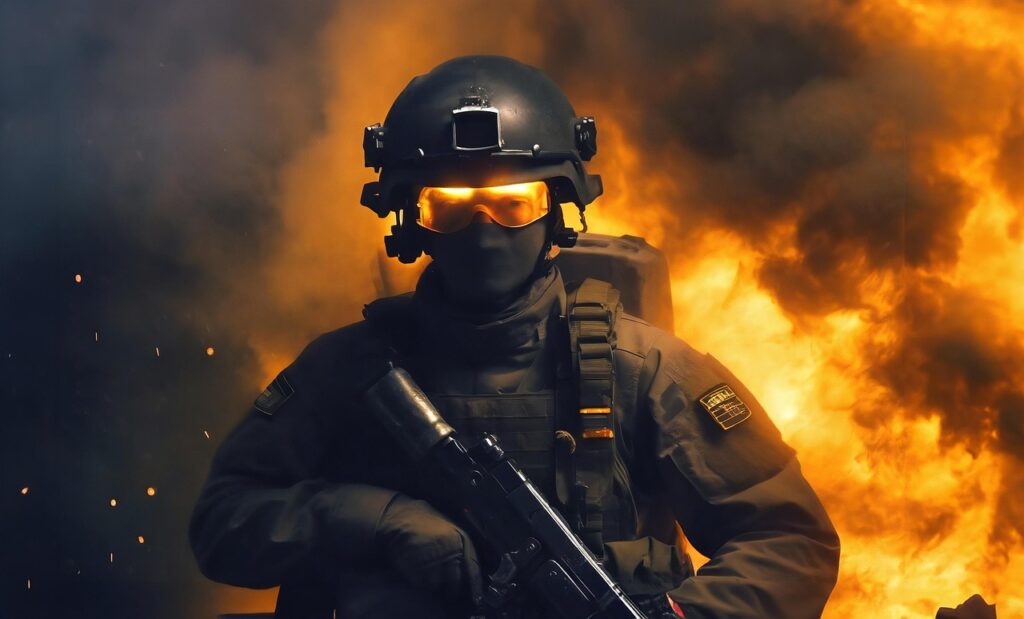
Military training is designed to break you — physically, mentally, and emotionally — and only the strongest survive. Around the world, elite special forces undergo some of the toughest training regimens known to mankind, pushing the boundaries of endurance, pain, and psychological resilience. Let’s take a deep dive into the most brutal military training programs across the globe — where failure is common, but quitting is never an option. 🇺🇸 U.S. Navy SEALs – Hell Week and Beyond Location: United StatesDropout Rate: Over 75% The SEALs are legendary for a reason. Their BUD/S training, especially the infamous Hell Week, is one of the most grueling experiences a soldier can face. Candidates face days of sleep deprivation, icy ocean drills, nonstop physical punishment, and psychological pressure. Only a small fraction make it to the end and earn the SEAL Trident. 🇷🇺 Russian Spetsnaz – Blood, Ice, and Fire Location: RussiaUnique Challenges: Hand-to-hand combat with live blades, psychological abuse, and winter survival in sub-zero conditions. Spetsnaz troops undergo intense beatings, are taught to ignore pain, and sometimes face extreme situations like getting shot with rubber bullets or stabbed with real knives as part of resilience training. Brutal doesn’t even begin to describe it. 🇰🇷 South Korean UDT/SEAL – Arctic Punishment Location: South KoreaTraining Feature: Sub-zero water dives, snow combat drills South Korea’s elite naval commandos conduct their winter training in blizzards, freezing rivers, and snow-covered battlefields. The goal? Survive and function at peak performance in some of the harshest environments on Earth. 🇮🇱 Israeli Sayeret Matkal – Intelligence + Physical Dominance Location: IsraelFocus: Recon, intelligence, survival Israel’s most elite unit demands both brains and brawn. The training includes language mastery, advanced surveillance, and field combat — often under simulated real-world pressure, like abductions and high-value target raids. 🇬🇧 UK SAS – “Who Dares Wins” in Action Location: United KingdomInfamous Test: The Fan Dance (24km speed march over mountainous terrain) The British Special Air Service (SAS) puts recruits through interrogation simulations, sleep deprivation, and harsh endurance tests, including the legendary “Fan Dance” in the Brecon Beacons. Failure is expected — only a handful pass. 🇫🇷 French Foreign Legion – Brotherhood in Brutality Location: FranceTraining Length: 15 weeks of non-stop endurance The Legion demands absolute discipline. Recruits face heat exhaustion, desert marches, and a strict code of silence and brotherhood. Many join without even speaking French — but those who survive come out as elite warriors with unbreakable bonds. 🇮🇳 Indian Para SF – The Phantom Warriors Location: IndiaSelection Rate: Less than 10% One of the most secretive and feared forces in Asia, the Para (Special Forces) go through 90 days of hellish testing, which includes brutal marches, combat simulations, and survival with minimal food or water. The motto? “Balidaan” – Sacrifice. 🇨🇳 Chinese Snow Leopard Commando Unit – Urban Warfare Experts Location: ChinaSpecialization: Anti-terrorism, hostage rescue These troops undergo obstacle-heavy endurance tests, live fire drills, hand-to-hand combat, and hostage rescue exercises — often under sleep deprivation and in full combat gear. 🇧🇷 BOPE (Brazil) – Warzone Training in the Favelas Location: BrazilKnown For: Real-world urban warfare scenarios Brazil’s BOPE unit is trained to operate in extremely violent environments, often dealing with drug cartels and terrorism. Their physical training is harsh, but the real challenge comes from live missions in deadly favelas. 🌍 Special Forces: World’s Toughest Test (TV Insight) Even Hollywood tried to simulate what special forces endure in the TV show Special Forces: World’s Toughest Test, where celebrities attempt real SF-style training. Most quit in days — showing just how unforgiving this path is, even under simulation. Final Thoughts: Why This Matters to Sri Lanka With Lieutenant Koyan Chamitha recently completing U.S. Navy SEAL training, Sri Lanka has officially entered the conversation about elite global military standards. His success highlights the potential within our forces — and the extreme level of resilience required to operate on this stage.
What It Really Takes to Become a U.S. Navy SEAL: The Brutal Training Behind the Badge

Lieutenant Koyan Chamitha’s achievement as the first Sri Lankan to complete U.S. Navy SEAL training is not just historic — it’s a window into one of the toughest military training programs on Earth. Becoming a Navy SEAL isn’t just about strength — it’s about endurance, mental toughness, teamwork, and a mindset that refuses to quit. The training pipeline is so intense, only the most determined candidates make it through. Let’s break down the process that Lieutenant Chamitha bravely completed — and what makes this journey so extraordinary. The SEAL Training Pipeline: A True Test of Human Limits SEAL candidates go through BUD/S (Basic Underwater Demolition/SEAL) training — a grueling 6-month course that tests everything from physical endurance to psychological resilience. But the most infamous phase? Hell Week. Hell Week: Where 75% Drop Out Hell Week is a five-and-a-half-day stretch during the first phase of SEAL training where candidates get only about four hours of sleep total. The rest is pure, continuous physical and mental exertion — from brutal surf torture to long-distance runs, log carries, and “drown-proofing” exercises in freezing water. “It’s not about how strong you are — it’s about how strong your mind is.” Pain, exhaustion, cold, and sleep deprivation are used to simulate combat stress and weed out those who can’t keep pushing under pressure. Only the few who refuse to ring the infamous “bell” — a symbol of quitting — make it through. 10 Leadership Lessons from the SEALs The SEAL ethos doesn’t just apply to warfare — it offers powerful lessons for leadership and life: These are the same principles Lieutenant Chamitha now brings back to Sri Lanka’s elite Special Boat Squadron (SBS), enhancing not only tactical capabilities but also leadership excellence. A Symbol of Resilience for Sri Lanka By completing this unparalleled training, Lieutenant Koyan Chamitha hasn’t just earned the SEAL Trident — he’s carried Sri Lanka’s flag into one of the most exclusive military brotherhoods in the world. His journey through BUD/S and Hell Week stands as a testament to the resilience, grit, and elite potential within our own armed forces.
Sri Lankan Navy Officer Makes History by Completing U.S. Navy SEAL Training
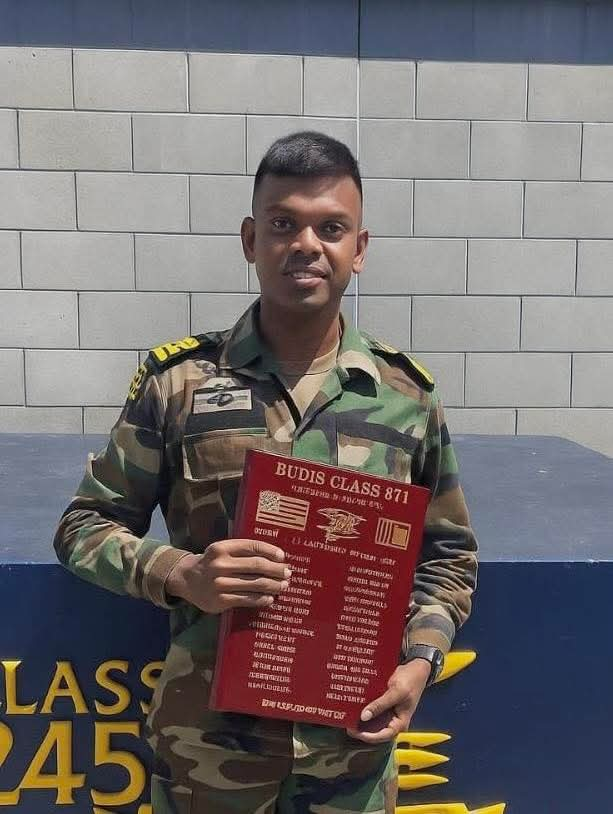
Lieutenant Koyan Chamitha of the Sri Lanka Navy’s elite Special Boat Squadron (SBS) has become the first-ever Sri Lankan to complete the world-renowned U.S. Navy SEAL training, earning the prestigious SEAL Trident pin. In a historic milestone that reflects both personal excellence and national pride, Lieutenant Chamitha successfully completed the grueling 14-month SEAL training program in the United States — a program recognized globally for its extreme physical and mental demands. With a dropout rate of over 75%, this elite training challenges even the most prepared soldiers. Yet, Chamitha endured and emerged with one of the most respected symbols in military service: the SEAL Trident. A Landmark Achievement for Sri Lanka Lieutenant Chamitha’s accomplishment is not just a personal victory; it is a monumental moment for Sri Lanka’s defense forces. As an officer of the Sri Lanka Navy’s Special Boat Squadron — often compared to other elite special forces units globally — Chamitha’s achievement is expected to bring both international recognition and cutting-edge tactical knowledge back home. This success paves the way for greater cooperation between the Sri Lanka Navy and international military units, especially in areas such as special operations training, maritime security, and counterterrorism. Inspiration for the Next Generation Chamitha’s journey from Sri Lankan shores to the elite ranks of the U.S. Navy SEALs will undoubtedly serve as an inspiration for young military aspirants in the country. His discipline, resilience, and dedication highlight the potential of Sri Lankan forces to compete and succeed on the world stage. National Pride on a Global Stage From Colombo to Coronado, Lieutenant Koyan Chamitha has proven that with determination and discipline, excellence knows no borders. His SEAL Trident is not just a badge of honor — it is a symbol of Sri Lanka’s growing presence in global defense circles. As Sri Lanka celebrates this unprecedented achievement, the nation also looks forward to the invaluable expertise Lieutenant Chamitha will bring back — strengthening the capabilities of the Special Boat Squadron and further enhancing Sri Lanka’s reputation in international military circles.
5 Foods You Must Try When You Visit Sri Lanka In 2025
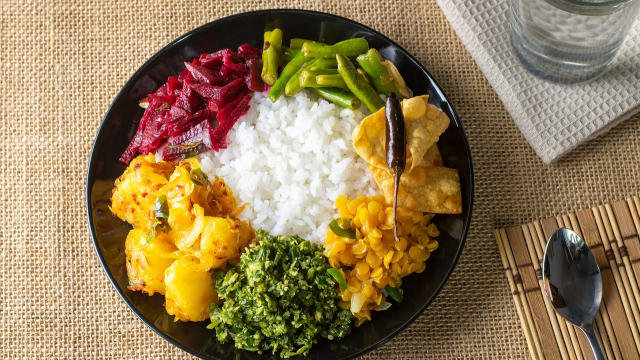
Sri Lanka is one of the prominent travel destinations in 2025. The island nature which is surrounded by sandy beaches and magnificent natural travel destinations, attracts many tourists. It’s said that you can experience all kinds of weather and landscape when you travel from the south to the north of the country. As the majority of Sri Lankans are Sinhalese, the country is multicultural with few other nationalities like Tamils, muslims and Moors. Not only that their main religion buddhism but there are Hindus, Christians, catholics and Muslims living in the country. Not only that this small island was also colonised by the Dutch and English people too. Under all these kinds of influences, the country has a vast cultural diversity. This affected the country’s food culture. Here we are bringing you the must-try dishes when you travel to Sri Lanka this year. Kottu Roti This simple dish started as a street food and is now popular around the country. The chopped-up roti is mixed with any protein you prefer. However, the most attractive part is how the kottu roti is made. You can enjoy the rhythmic sound how the knives hitting the hot griddle while mixing with the preferred gravy. Egg Hoppers This is a crispy crêpe made with fermented rice flour and coconut milk. There are different kinds of hoppers, and you can eat the simple crepe just made with rice flour with onion sambol or a spicy chicken curry. However, when the carpe accerised with an egg, it hits differently. You can try it with those curries or with a plain Cylone tea. Milk Rice This rice dish is just rice cooked in coconut milk. However, with that simplicity, milk rice holds a cultural value in the country. This dish is normally prepared on special occasions and to offer Lord Buddha or on Poya days. This is paired with onion chilli sambol, and you can even try it with chicken curry or fish curry as you prefer. Rice and Curry Sri Lankan rice and curry is not just a dish but an art. White rice is compared with hundreds of cooked vegetables and fish curries. Sri Lankan spice mixes and coconut milk are used in most of the dishes. Short Eats These small street snacks are found from small street carts to five-star restaurants. It’ll be budget budget-friendly quick snack when you travel around the country. As this will fill you up and will make you experience the marvellous mixture of vegetables and Cylone spice mixtures. Prasanjani Weerasinghe
5 Fascinating Fun Facts About Australia You Probably Didn’t Know
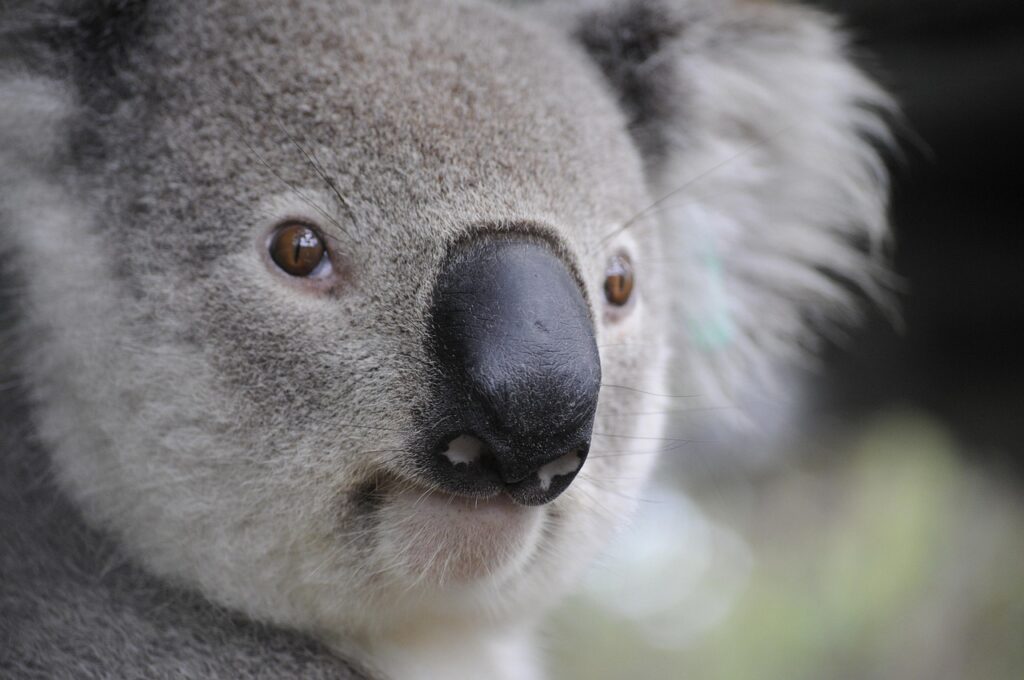
Australia, the land down under, continues to surprise visitors and locals alike with its unique characteristics and quirky traditions. From deadly creatures to unusual wildlife, here are five captivating facts about this remarkable continent that will make you see Australia in a whole new light. 1. Australia Has More Deadly Animals Than Almost Anywhere Else on Earth When people think of dangerous Australian wildlife, they’re not wrong to be cautious. The continent is home to some of the world’s most venomous creatures, including the box jellyfish, funnel-web spiders, and the inland taipan – the world’s most venomous snake. However, despite this fearsome reputation, deaths from these creatures are extremely rare thanks to modern medical care and public awareness. The Sydney Funnel-web Spider hasn’t caused a death since the 1980s, proving that Australia’s wildlife, while formidable, coexists surprisingly well with its human inhabitants. 2. The Great Barrier Reef Can Be Seen from Space Stretching over 2,300 kilometers along Queensland’s coast, the Great Barrier Reef is not only the world’s largest coral reef system but also one of the few living structures visible from space. This natural wonder comprises over 2,900 individual reefs and 900 islands, making it larger than the United Kingdom, Holland, and Switzerland combined. The reef supports an incredible 25% of all marine fish species and provides a home to countless other marine creatures. For Sri Lankan travelers planning their Australian adventure, the reef offers world-class snorkeling and diving opportunities that rival any tropical destination. 3. Australia Has a City That Exists Entirely Underground In the heart of South Australia’s outback lies Coober Pedy, often called the “opal capital of the world.” What makes this town extraordinary is that most of its residents live underground in elaborate cave homes called “dugouts.” The underground lifestyle isn’t just quirky – it’s practical. With surface temperatures reaching 50°C (122°F) in summer, living underground maintains a comfortable 22-25°C (72-77°F) year-round. The town features underground churches, hotels, museums, and even golf courses with no grass – just dirt and oil. This unique adaptation to Australia’s harsh climate showcases the ingenuity of its inhabitants. 4. Melbourne Once Hosted the Olympics Despite Being Winter Here’s a geographical quirk that catches many off guard: when Melbourne hosted the 1956 Summer Olympics, it was actually winter in Australia! Due to the Southern Hemisphere’s reversed seasons, the games took place from November 22 to December 8, during Australia’s late spring. This made Melbourne the first city in the Southern Hemisphere to host the Olympics. The timing created unique challenges – and opportunities – with athletes competing in Australia’s mild winter weather while the Northern Hemisphere experienced its cold season. For visitors from tropical Sri Lanka, understanding Australia’s seasonal flip is crucial for planning the perfect trip. 5. Australia’s Largest Cattle Station is Bigger Than Israel Anna Creek Station in South Australia covers an astounding 23,677 square kilometers (9,142 square miles), making it larger than the entire state of Israel and nearly four times the size of Sri Lanka. To put this in perspective, it would take over 6 hours to drive across the property at highway speeds. The station runs approximately 10,000 cattle across this vast expanse, with some areas so remote that helicopters are the only practical means of transportation. This massive scale exemplifies Australia’s agricultural prowess and the sheer size of the continent – something that constantly amazes visitors from smaller nations. Planning Your Australian Adventure These fascinating facts barely scratch the surface of what makes Australia such an incredible destination. From its unique wildlife to its vast landscapes and innovative solutions to harsh climates, Australia offers experiences unlike anywhere else on Earth. Whether you’re interested in exploring the underwater wonders of the Great Barrier Reef, discovering underground cities, or experiencing the vastness of the outback, Australia promises adventures that will create lasting memories. For more travel inspiration and detailed guides about exploring Australia from Sri Lanka, visit our comprehensive travel section and start planning your next adventure to this remarkable continent. Ready to explore more amazing destinations? Check out our other travel articles and discover your next adventure from Sri Lanka.
Best Places to Visit in Sri Lanka: Ultimate 2025 Guide
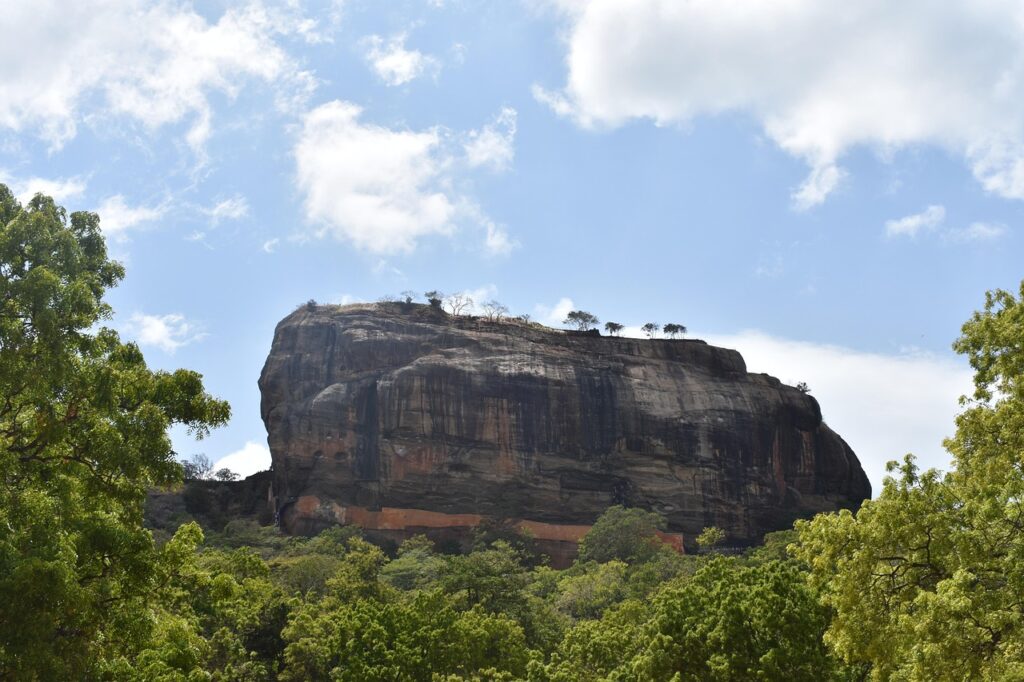
Sri Lanka, the pearl of the Indian Ocean, offers an incredible diversity of experiences packed into a compact island nation. From ancient cultural sites and pristine beaches to misty mountains and wildlife sanctuaries, Sri Lanka’s best travel destinations cater to every type of traveler. Whether you’re seeking adventure, relaxation, or cultural immersion, this comprehensive guide will help you discover the most spectacular places to visit in Sri Lanka. 1. Sigiriya Rock Fortress – The Eighth Wonder of the World Standing majestically 200 meters above the surrounding landscape, Sigiriya is undoubtedly one of Sri Lanka’s most iconic landmarks. This ancient rock fortress, built in the 5th century by King Kashyapa, showcases remarkable engineering and artistic achievements that continue to amaze visitors today. The climb to the summit reveals breathtaking frescoes of celestial maidens, intricate water gardens, and panoramic views that stretch across the Central Province. Early morning visits offer the best experience, avoiding crowds and intense heat while capturing golden hour photography opportunities. Best Time to Visit: December to AprilEntry Fee: LKR 4,320 for foreignersPro Tip: Wear comfortable shoes and bring water for the 1,200-step climb Internal Link: Planning Your Sri Lanka Itinerary 2. Kandy – The Cultural Capital of Sri Lanka Nestled in the central highlands, Kandy serves as Sri Lanka’s cultural heart and former royal capital. The sacred Temple of the Tooth Relic (Sri Dalada Maligawa) houses Buddhism’s most precious relic, making it a significant pilgrimage site for millions of devotees worldwide. Beyond its spiritual significance, Kandy offers visitors the Royal Botanical Gardens in Peradeniya, traditional Kandyan dance performances, and scenic lake walks. The annual Esala Perahera festival transforms the city into a spectacular cultural celebration featuring elaborately decorated elephants and traditional ceremonies. Must-See Attractions: External Link: UNESCO World Heritage Sites in Sri Lanka 3. Galle Fort – Colonial Charm Meets Modern Elegance The Galle Fort, a UNESCO World Heritage Site, represents one of the best-preserved colonial fortifications in Asia. Built by Portuguese colonizers in the 16th century and later fortified by the Dutch, this coastal gem seamlessly blends European architecture with South Asian traditions. Wandering through the fort’s cobblestone streets reveals boutique hotels, art galleries, cafes, and museums housed within centuries-old buildings. The ramparts offer spectacular sunset views over the Indian Ocean, while the lighthouse stands as an iconic landmark for photography enthusiasts. Highlights: Internal Link: Best Hotels in Galle Fort 4. Ella – Hill Country Paradise Ella has emerged as one of Sri Lanka’s most popular destinations among backpackers and nature lovers. This charming hill station offers cool climate, stunning mountain views, and numerous hiking opportunities that showcase the country’s natural beauty. The famous Nine Arch Bridge, carved into the mountainside without using any steel, provides Instagram-worthy photo opportunities as trains pass through the scenic landscape. Little Adam’s Peak offers relatively easy hiking with rewarding panoramic views, while Ella Rock challenges more adventurous trekkers. Top Activities in Ella: 5. Yala National Park – Wildlife Safari Adventure Yala National Park boasts the highest density of leopards in the world, making it Sri Lanka’s premier wildlife destination. Spanning 979 square kilometers of diverse ecosystems, the park supports over 44 mammal species and 215 bird species. Safari experiences in Yala offer opportunities to spot elephants, sloth bears, crocodiles, and numerous bird species alongside the elusive Sri Lankan leopard. The park’s varied landscapes include grasslands, forests, lagoons, and coastal areas, creating perfect habitats for diverse wildlife. Safari Tips: External Link: Sri Lanka Wildlife Conservation 6. Anuradhapura – Ancient Civilization Wonder As Sri Lanka’s first capital and one of the world’s oldest continuously inhabited cities, Anuradhapura offers fascinating insights into the island’s ancient Buddhist civilization. This sacred city houses magnificent dagobas (stupas), ancient monasteries, and the sacred Sri Maha Bodhi tree. The archaeological site spans vast areas, requiring full-day exploration to appreciate its historical significance. Cycling remains the most popular way to navigate between the scattered ruins while experiencing the serene atmosphere of this ancient city. Key Archaeological Sites: 7. Nuwara Eliya – Little England of Sri Lanka Nuwara Eliya, situated at 1,868 meters above sea level, offers a refreshing escape from tropical heat with its cool mountain climate. Known as “Little England,” this hill station retains colonial-era charm through Tudor-style architecture, manicured gardens, and tea estates stretching across rolling hills. The region produces some of the world’s finest Ceylon tea, with numerous estates offering guided tours and tastings. Victoria Park provides peaceful walks among colorful flowers, while nearby Horton Plains National Park features the dramatic World’s End cliff formation. Attractions and Activities: Internal Link: Best Tea Estates to Visit in Sri Lanka 8. Mirissa – Whale Watching Capital The coastal town of Mirissa has gained international recognition as one of the world’s best whale watching destinations. Between November and April, blue whales, sperm whales, and dolphins migrate through these waters, offering spectacular marine life encounters. Beyond whale watching, Mirissa’s crescent-shaped beach provides excellent swimming, surfing, and sunset viewing opportunities. The relaxed atmosphere attracts travelers seeking beachside relaxation combined with exciting marine adventures. Marine Life Spotting Season: 9. Polonnaruwa – Medieval Capital Ruins Polonnaruwa served as Sri Lanka’s medieval capital from the 11th to 13th centuries, leaving behind extraordinarily well-preserved ruins that showcase advanced urban planning and architectural sophistication. This UNESCO World Heritage Site offers more compact exploration compared to Anuradhapura while maintaining equal historical significance. The Gal Vihara rock temple features four magnificent Buddha statues carved from a single granite wall, representing the pinnacle of ancient Sinhalese stone carving artistry. The Royal Palace complex and Parakrama Samudra reservoir demonstrate the advanced engineering capabilities of medieval Sri Lankan civilization. 10. Adam’s Peak (Sri Pada) – Sacred Mountain Pilgrimage Adam’s Peak, standing 2,243 meters tall, holds sacred significance for multiple religions due to the mysterious footprint-shaped depression at its summit. Buddhists believe it belongs to Buddha, while Christians and Muslims attribute it to Adam, making this mountain a unique multi-religious pilgrimage site. The challenging 5-7 hour climb traditionally begins at midnight, allowing pilgrims to reach the summit for spectacular sunrise views. The
